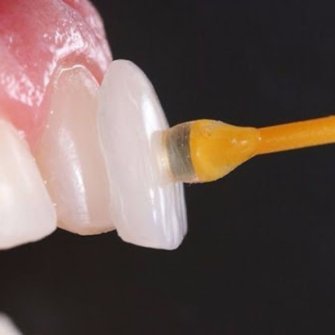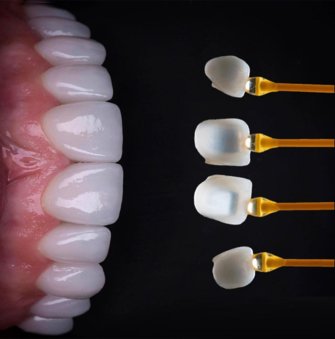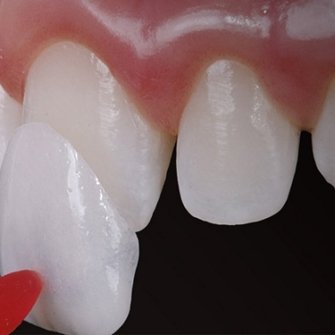
Veneer Treatment Overview
Veneers are thin shells that are individually crafted and bonded to the front surface of your teeth to correct minor aesthetic issues. Veneers are typically made from ceramic or composite resin materials, which are then bonded to your teeth via a specially formulated dental cement.
Who is this for
- Veneers are suitable for people who suffer from discolouration of their teeth, whether due to fluoride exposure, prescription drugs, smoking, or root canal procedures.
- Veneers may also be suitable for people who have minor cosmetic damage on their teeth, or disproportionately large spaces between teeth.
Treatment abroad
- Minimum stay: 3 - 5 Days
- Number of trips: 1
Treatment process
- Initial enamel extraction takes 10 to 20 minutes for every tooth.
- Construction of a porcelain veneer may take 3 days.
- Bonding of porcelain veneer to tooth takes about 1 to 2 hours; bonding of composite veneers takes about 20 mins to 2 hours.
- Can resume normal activities immediately once bonding is complete.
Veneer Treatment Cost
Type
Advantages
Disadvantages
Price
Porcelain Veneer
Durable
Natural Looking
Stronger
Price
Time
Sometimes anesthesia required
€250
Composite Veneer
Same day result
Time
No anesthesia required
Not natural looking as porcelain veneer
Not durable as porcelain veneer
€130
Veneer Treatment Cost
Type
Price
Porcelain Veneer
€250
Composite Veneer
€130
Dental Veneers Treatment Process
How does it work?
Dental veneers are a treatment to restore the natural appearance of teeth. To create them, a thin shell-like mould is made from composite resin or ceramic materials. This shell is then bonded to the front of the tooth via a specially formulated dental cement. The aim of veneers is to improve the physical appearance of minorly damaged or discoloured teeth.
What does a veneer procedure involve?
1. Consultation
First, you will have a consultation with the dentist. The dentist will examine your teeth, look for signs of damage or decay, and decide whether veneers is a suitable treatment for you. If there is an underlying condition that is compromising your teeth, such as periodontal disease or clear evidence that you habitually grind or clench your teeth, the dentist may not recommend veneers. But if the teeth are healthy and the problems are purely cosmetic, the veneer construction process can then begin.
Your initial consultation will be done through clear photos of your teeth and your dental history. Once you arrive at the clinic, you will have another in-person consultation to confirm that you are suitable for veneers.
During the consultation, the dentist will discuss your wishes for how you want your veneers to look in terms of shape and colour. They'll also advise you on what would look most natural based on their professional opinion when considering the characteristics of veneers (translucency, brightness, and colour).
2. Preparation of your teeth
Next, the dental specialist will use precision tools to remove the outer layer of enamel from the teeth being treated. This may be done on the same day as your consultation if you are abroad or during a second visit if staying locally.
The width and depth of the layer will correspond approximately to the layer of veneer being applied. A local anaesthetic will be used to dull the pain during this process.
3. Making the mould
Once the teeth have been prepared, the dentist will then make a mould in order to construct the veneers that specially fit your teeth.
The mould will then be sent to the clinic's own dental laboratory or to an external lab if they do not have one onsite. The lab will use the mould to produce exact replicas of the damaged teeth. A type of ceramic (usually porcelain or laminate) is the material most often used for veneers but a composite resin will be used if you are being fitted with indirect composite veneers.
The veneers will be produced in a few days. You will be provided with temporary veneers to wear while your permanent veneers are being made.
For direct composite veneers, the veneers are created directly on the treated teeth using a composite resin.
4. Bonding the veneer
Once the permanent veneers are ready, the next step is the bonding procedure. The veneers may first need to be trimmed slightly to fit the tooth. Then, the tooth needs to be prepared for bonding. The dentist will polish the tooth, then etch it to create a suitable bonding site for the cement and the veneer. Anaesthesia is usually not needed during this part of the treatment.
After that, the dental cement is applied to the teeth and the veneer is attached. The dentist will use a special focused light to "activate" the cement and tightly bond the veneer to the tooth. This process happens in a matter of minutes. Finally, any excess cement will be quickly removed, leaving the veneer in place and restoring the natural appearance of your teeth.
VENEER TREATMENT GALLERY
Veneer treatment process images
After Care
Daily brushing and flossing is vital. The veneers go through the same changes as the teeth under it, so it is important to take similar care.
A soft diet is recommended for the first few days after the procedure. It will take some time before you get adjusted to the new structure of your teeth.
Dental Veneers FAQ
What types of veneers are there?
The more common type of veneer, and the ones most people are familiar with, are "frontal" or "facial" veneers, which are applied to the front of teeth, and tend to be a more effective cosmetic intervention.
There are two major types of frontal veneers: porcelain and composite.
Porcelain or ceramic veneers
Although more expensive and time-consuming, porcelain veneers have many qualities that make the inconvenience worthwhile.
Porcelain veneers usually require some extra dental work to prepare the teeth for bonding, but they have some significant benefits. They tend to reflect light in a more natural manner, mimicking the effect of tooth enamel better. They are also stronger, can last longer than composite alternatives, and resist staining more effectively with proper care.
Composite veneers
Composite veneers are applied directly to your teeth by building up several layers of resin to create the new veneer.
In composite veneer treatment your teeth will be etched beforehand as well as have an adhesive glue applied to help with the adhesion of the resin material. A focused light is used to harden both the composite material and the adhesive material to secure the veneer in place. The veneer will then be cleaned up and polished to its final appearance.
Composite veneers can be more convenient than porcelain alternatives, as they are cheaper and require fewer visits to the dentist. They also tend to require less drilling and processing of your teeth.
However, they are usually less hard-wearing than porcelain veneers, and will generally have to be replaced within 5-8 years of installation. In many cases, they are also more susceptible to staining and do not always have a natural-looking toothlike translucency, which can compromise the cosmetic qualities of the veneer.
What should I expect after being fitted with veneers?
After the procedure, it will be necessary to attend a follow-up appointment with your dentist to assess how the veneers are fitting. The dentist will examine how the veneers are interacting with your gums, and make any recommendations for gum or tooth cleaning going forward. However, further invasive dental work should not be required.
If you are abroad, your dentist will want to do final checkups before allowing you to travel home.
Maintaining dental veneers is generally simple, but important. As with natural teeth, they need to be kept clean to ensure that their pristine appearance is retained for as long as possible. A non-abrasive toothpaste may be suggested to ensure that cleaning does not compromise the surface of the veneers.
In most cases, the dentist will also recommend wearing a night-guard when you sleep to protect the veneers, particularly if you grind or clench your teeth at all.
You should also expect to attend regular appointments with your dentist. To enjoy the maximum benefit of your veneers, it is advisable to book hygienist sessions where specialists can apply non-abrasive polishes that are formulated specifically for veneers. Regular dental appointments can also flag up any concerns about the integrity of your veneers, or secondary problems resulting from their installation such as tooth decay.
By and large, you can expect an instant improvement in the cosmetic appearance of your teeth and renewed confidence as a result. However, maintaining your oral health after getting veneers is just as necessary and important as it was before.
Potential risks and side effects
- Colour of veneers may not be exact match to colour of patient's teeth, and colour cannot be changed after installation.
- Teeth grinding or strong impact may cause veneers be detached from teeth, causing them to fall out.
- Around 95 percent of porcelain veneers remain in place and in their original condition after 5 years, and 83 percent remain in good condition after 20 years. The figures are slightly lower for composite veneers.
Alternative treatmens
Plan your treatment and get a quote online.
30 minutes free online video and phone consultation. Schedule your virtual visit.









